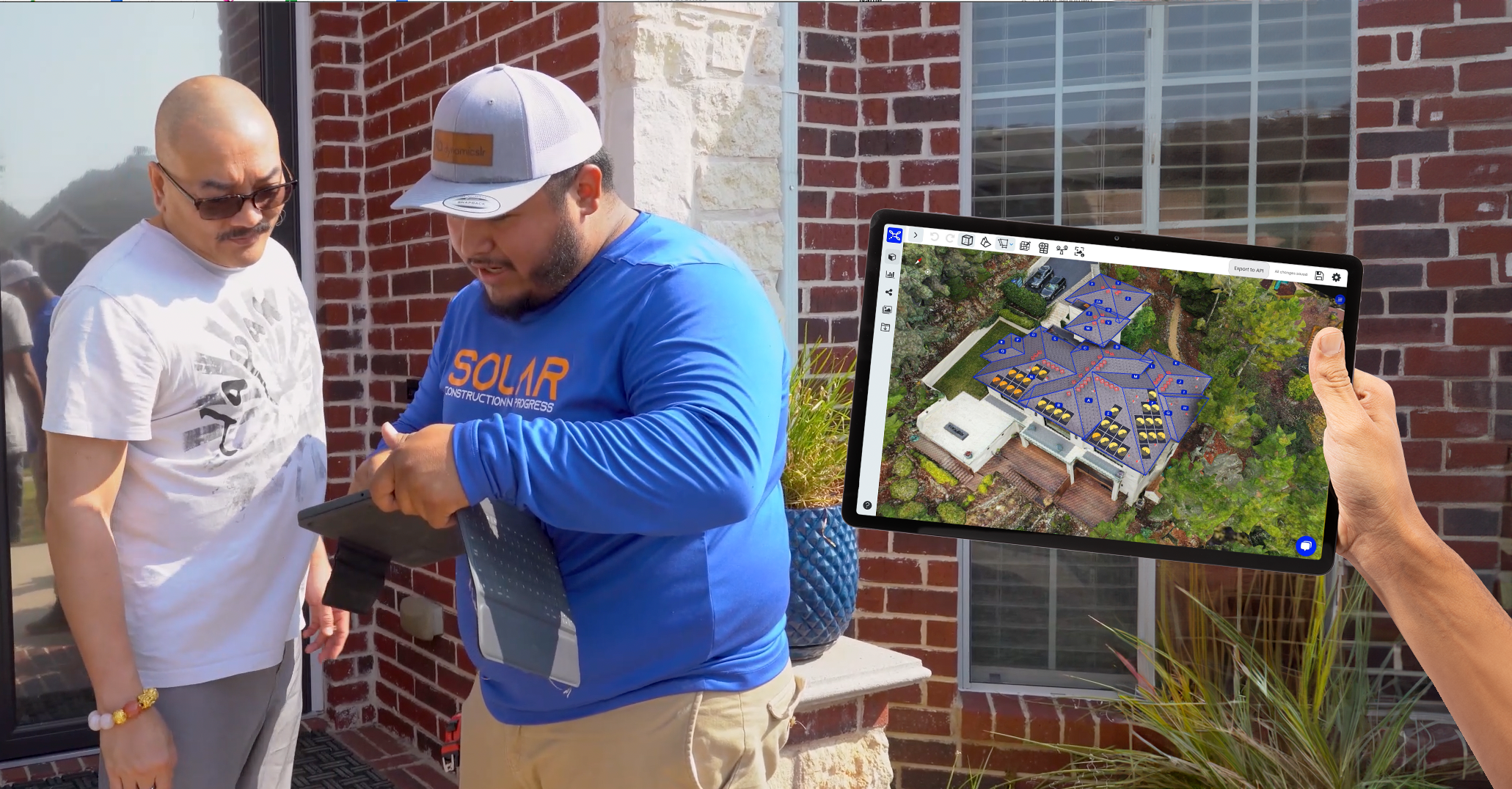A well-designed 3D model is a little-known way to sell more solar.
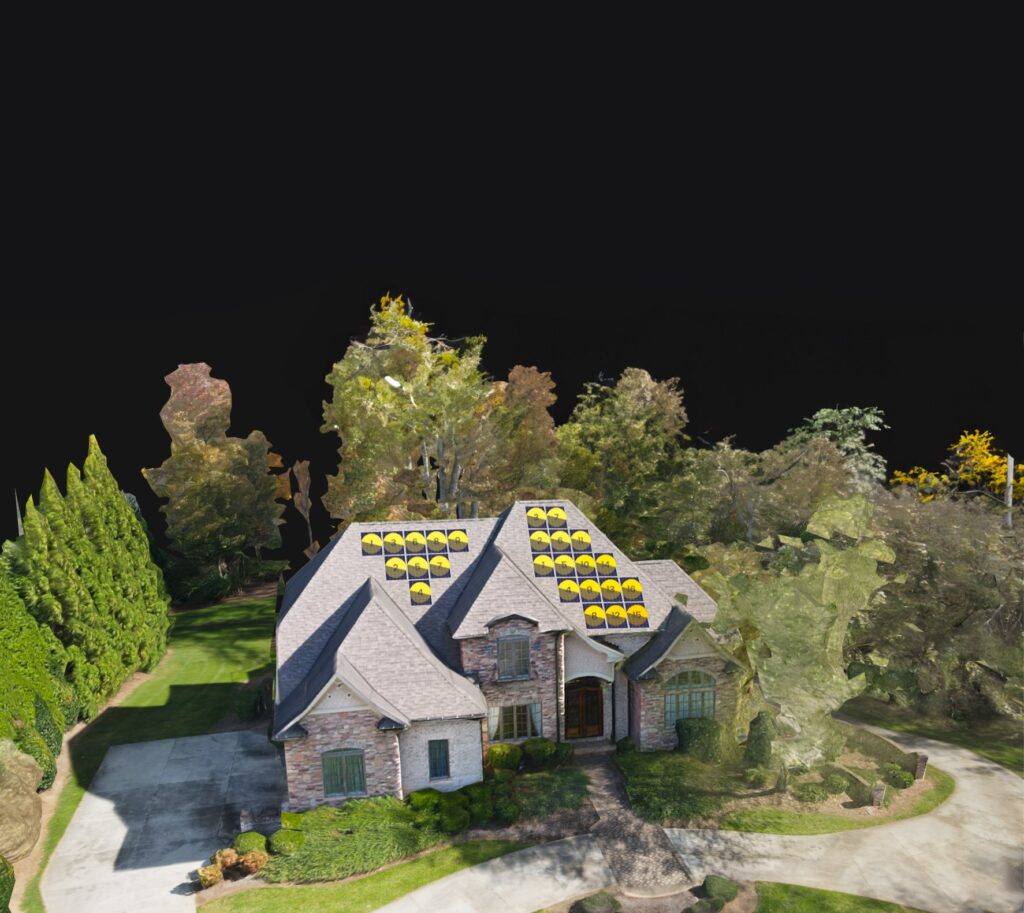
Simply put, many designs are boring. They are flat, 2D layouts that might make sense to an engineer but don’t inspire homeowners. There is little customization, coloring, or real-life-looking simulations.
A well-thought-out PV system design that is also presented well can sway decision-making because you’re not just selling a production offset; you’re selling a visual change to someone’s property.
Homeowners, even if they are familiar with solar, are far more interested in how the system will look and perform on their home. It can be about their home’s aesthetic, value, and look in their neighborhood.
With all those thoughts and emotions wrapped up in the decision, here’s how a great design helps move the project forward.
1. Photorealistic 3D models showcase the future
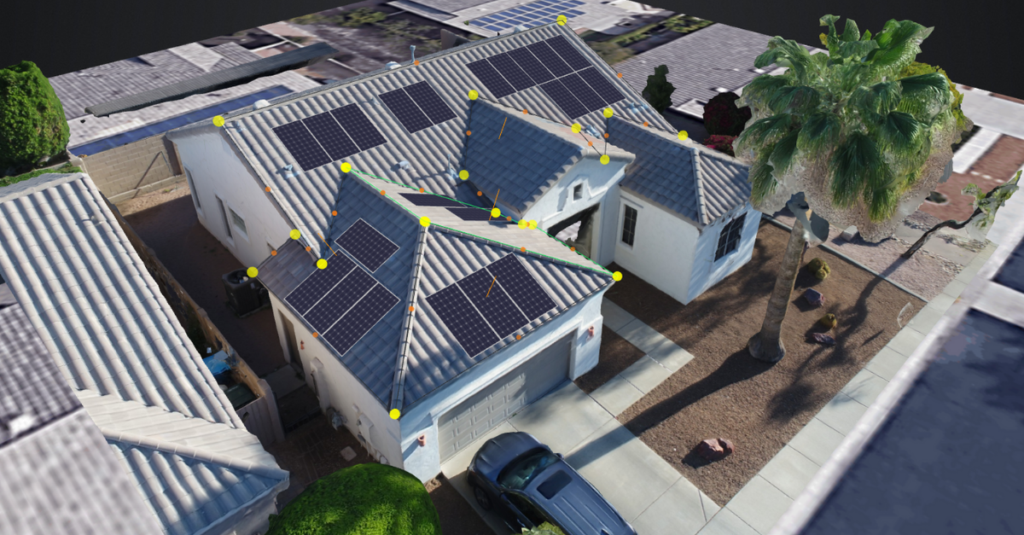
2D blueprint models are useful for Installers, but fall flat with homeowners. A typical person might be impressed with a technical plan’s complexity, but they’ll have a hard time visualizing a finished product on their roof.
Photorealistic 3D models, on the other hand, offer a powerful visual aid. When homeowners look at a complete design, they can truly see what the array will look like on their whole property, not just an image of a single roof plane. Using drones and photogrammetry facilitates this experience.
2. Showcasing actual site details makes the project more digestible
Showing real images of trees, chimneys, garages, and other property features puts people firmly onto their property. A ‘“lollipop” tree that looks like a video game from the 2000s brings people out of reality.
A virtual replica of onsite details makes your project more relatable. Using a mobile app to digitize a scene is a simple and efficient way to do that. You’re not just selling the idea of solar and the promise of financial ROI; you can back it up with site context that is entirely customized to each project.
3. High-quality designs mean achievable production estimates
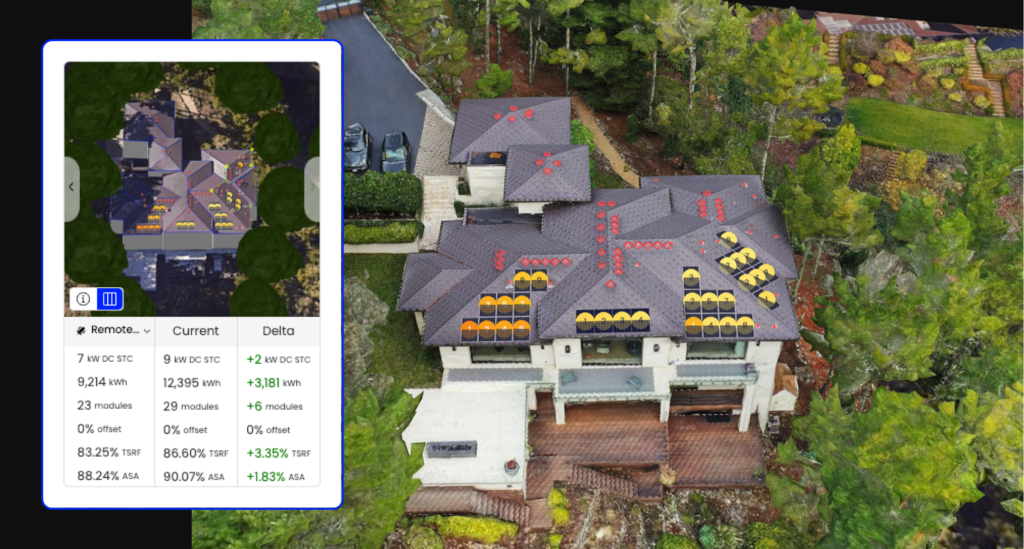
Seeing the topline number of how much electricity you can offset is exciting. But unfortunately, there are many instances where preliminary designs are wildly different from actual survey data and final designs. Frequent change orders lead to reputational issues, especially if you regularly sell based on designs you can’t deliver. This can also become a financial issue if you offer production guarantees.
With a photorealistic 3D model, you can back up your claims with true accuracy. In your sales conversations, you can use the model to show exactly how many panels there are and how you’re planning around roof obstructions. Capturing site context with drones also delivers more accurate shade analysis because vegetation, trees, and surrounding buildings are already automatically scaled and reflect the onsite, real-time construction. Now, you can truly stand behind production estimates.
4. The tools you use help you stand out
Solar is an inherently innovative technology—but manual surveying methods like climbing onto a roof and using pen and paper contradict that image.
Using innovative technology to survey (like drones and mobile apps) extends that image naturally and helps you stand out, delivering more confidence to homeowners that you know what you’re doing and are ahead of the technology curve.
Further, using a drone means you can stay on the ground during the survey, even inviting homeowners (and neighbors) to watch. This gives you more time to build rapport and talk to your potential customers, learning about their desires and wants with solar so you can fine-tune your sales pitch.
Design is a sales differentiator
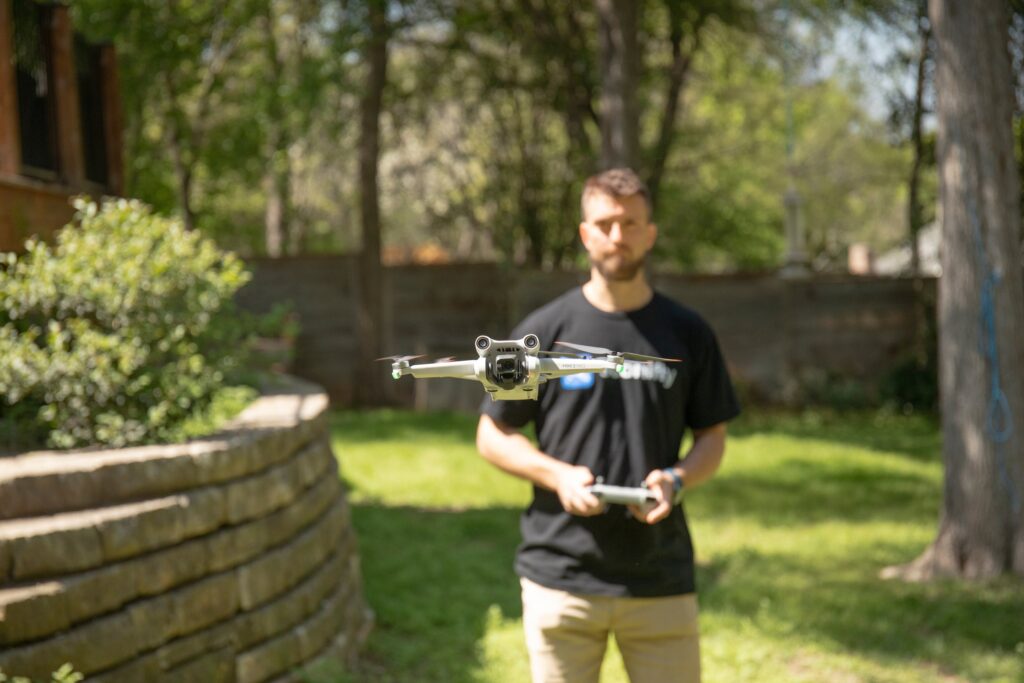
Simply put, giving homeowners the opportunity to walk through a 3D model with a solar array on their own property makes the project real. When you collect data with drones, you also know you’ve got accuracy from day one, making it easier to instill confidence in potential customers. You can even leverage tools like Scanifly Share Link so homeowners can play around with the model on their own time, exploring how the system will look.
All Contractors should empower their salespeople with the technology necessary to improve close rates. Not only will this give your sales team a leg up against the competition, but you’ll also streamline the entire project process as centralized data makes it easier for Designers, Engineers, Procurement, and Installers to get the job done.

